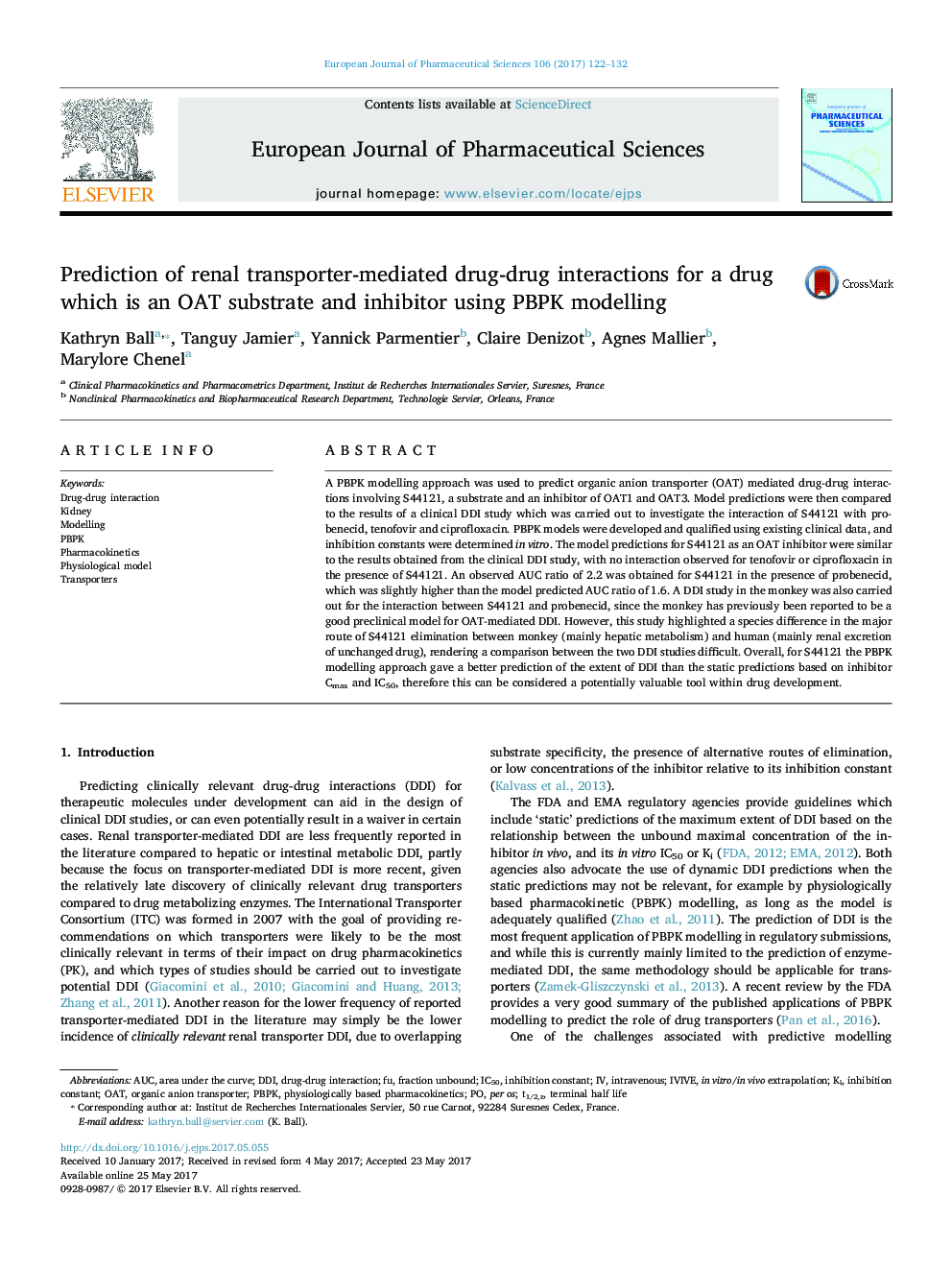| Article ID | Journal | Published Year | Pages | File Type |
|---|---|---|---|---|
| 5547733 | European Journal of Pharmaceutical Sciences | 2017 | 11 Pages |
A PBPK modelling approach was used to predict organic anion transporter (OAT) mediated drug-drug interactions involving S44121, a substrate and an inhibitor of OAT1 and OAT3. Model predictions were then compared to the results of a clinical DDI study which was carried out to investigate the interaction of S44121 with probenecid, tenofovir and ciprofloxacin. PBPK models were developed and qualified using existing clinical data, and inhibition constants were determined in vitro. The model predictions for S44121 as an OAT inhibitor were similar to the results obtained from the clinical DDI study, with no interaction observed for tenofovir or ciprofloxacin in the presence of S44121. An observed AUC ratio of 2.2 was obtained for S44121 in the presence of probenecid, which was slightly higher than the model predicted AUC ratio of 1.6. A DDI study in the monkey was also carried out for the interaction between S44121 and probenecid, since the monkey has previously been reported to be a good preclinical model for OAT-mediated DDI. However, this study highlighted a species difference in the major route of S44121 elimination between monkey (mainly hepatic metabolism) and human (mainly renal excretion of unchanged drug), rendering a comparison between the two DDI studies difficult. Overall, for S44121 the PBPK modelling approach gave a better prediction of the extent of DDI than the static predictions based on inhibitor Cmax and IC50, therefore this can be considered a potentially valuable tool within drug development.
Graphical abstractDownload high-res image (159KB)Download full-size image
